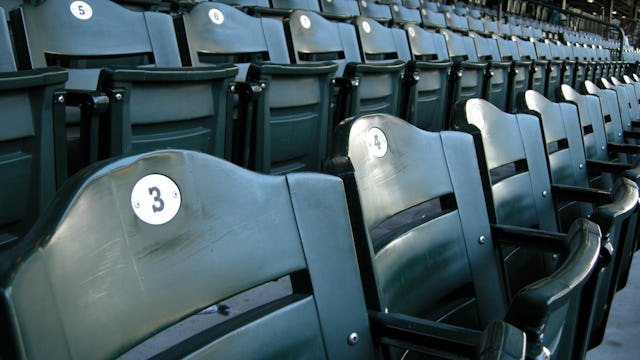Woman Died After Getting Hit By A Foul Ball At A Baseball Game

While the risks associated with playing football are frequently in the news, it seems that the risks associated with watching baseball may not be getting the attention they deserve. ESPN recently reported that a grandma of seven died last August after getting hit by a foul ball at a Los Angeles Dodgers game. What’s even almost as shocking is that the story is just hitting the news now — nearly six months after her death.
According to a coroner’s report, Linda Goldbloom, a mom of three and grandmother of seven, was celebrating her 79th birthday and 59th wedding anniversary at a game between the Dodgers and the Padres on August 25, 2018 when she was struck in the head by a foul ball. She died four days later.
While this might sound like a freak accident, injuries caused by foul balls are far more common than you might think. Last summer, I saw a woman escorted out of the game with a ice pack on her face after getting hit with a foul ball. A toddler was hit in the face by a foul ball at Yankee Stadium last year. And not long ago, mom Dina Simpson lost her eyesight when she was hit by a foul ball at a minor league game.
“I was in my seat just a few rows behind the kids when I heard my husband yell, ‘Heads up!’ The next thing I know, I was hit smack in the eye by a line drive,” she said. “The ball was traveling over 100 mph. I had less than a second to react, virtually no time. I was rushed to the trauma unit and did not come home for three days. The injury has left me blind in my right eye. This will be permanent.”
Baseball is called America’s favorite pastime for a reason. According to ESPN, more than 72 million people attended major league baseball games in 2017 — and that doesn’t even account for all the minor league games held at stadiums around the country.
In 2018, all 30 major league ballparks had expanded protective netting that reached to at least the far ends of each dugout, following the for increased netting after a several spectator injuries in 2017. But many don’t feel that the ballparks and teams have gone far enough to protect fans.
“While all 30 MLB and many minor league ballparks did extend the netting to the far ends of the dugouts, this is not far enough,” Simpson told Scary Mommy. “I was past the dugouts as were many others who were severely injured, and the netting must extend farther down the baselines.”
Although the Dodgers said in a statement that the “matter has been resolved between the Dodgers and the Goldbloom family,” unfortunately, legal recourse can be difficult if a fan is injured at the ballpark. According to Sports Illustrated, under the so-called “baseball rule” teams have a limited duty to protect fans from foul ball injuries. While interpretation of the extent of the “baseball rule” varies, courts typically hold that teams must only provide protective netting to those fans seating in the “zone of dangers.” Fans sitting outside of their area — including fans seated along the first and third base line — are considered to have assumed the risk possible foul ball injuries.
Moreover, just because the teams don’t have to extend the netting, doesn’t mean they shouldn’t.
“MLB is very aware that it is nearly impossible to fend off a line drive traveling at great speed, yet they leave it on the fans to protect themselves,” she said. “These injuries are preventable and they know it.”
While there are some fans who balk (see what I did there?) at the idea of expanded netting because it would impeded there view, this isn’t just about the individual fan experience. It’s about protecting as many fans as possible — especially fans who for whatever reason (kids, elderly, those with disabilities) might not be able to move quickly if a foul ball comes zipping toward their head. Not to mention the burden on ball players if they unintentionally cause harm (or in this case, death) to a fan.
For spectators, Simpson offers these words of warning: “Never assume that because there is no protective netting past the dugouts that it must be safe from line drives — it is just as dangerous. If you do not feel safe where you are sitting, you can ask to be moved. Until these organizations truly put fan safety first, it will be up to you to protect yourself and your family.”
I am a baseball fan through and through. In fact, I’m literally counting down the days until Spring Training games start (February 21 in case you were wondering). But my “seats” for the game at home in front of the television or while listening to the radio are looking better and better.
This article was originally published on